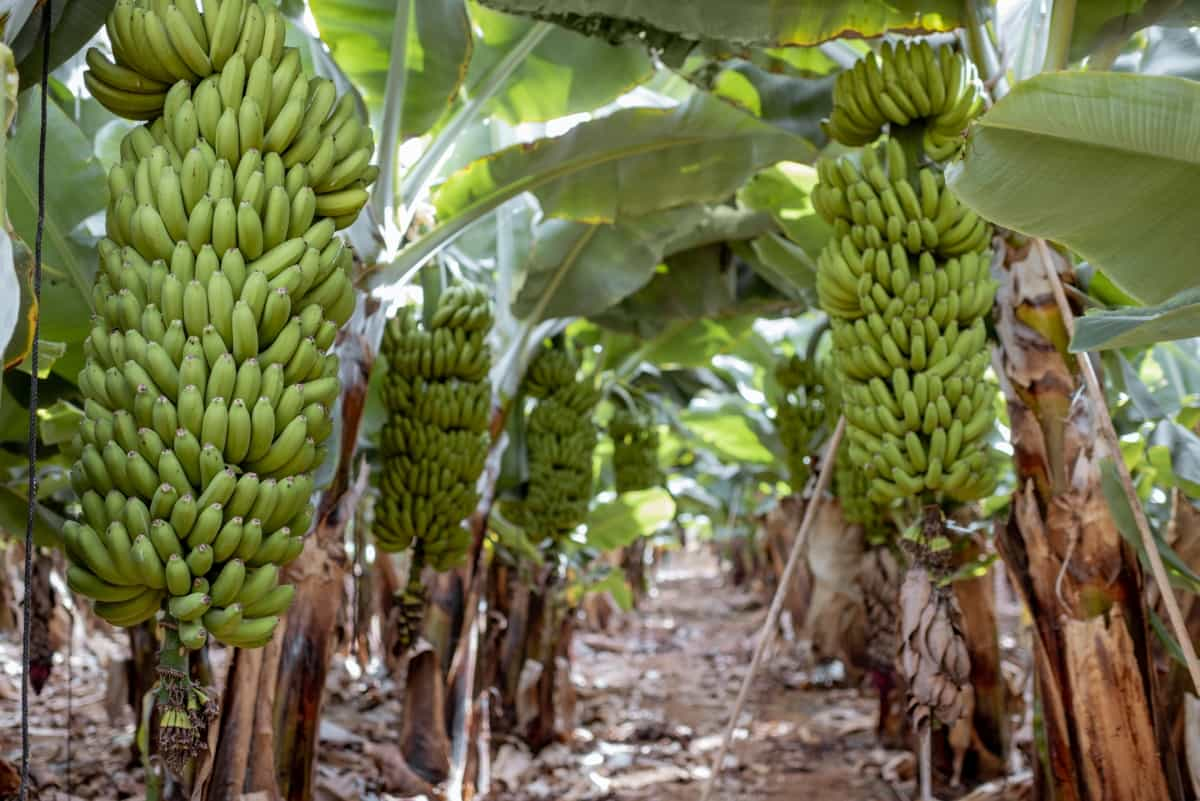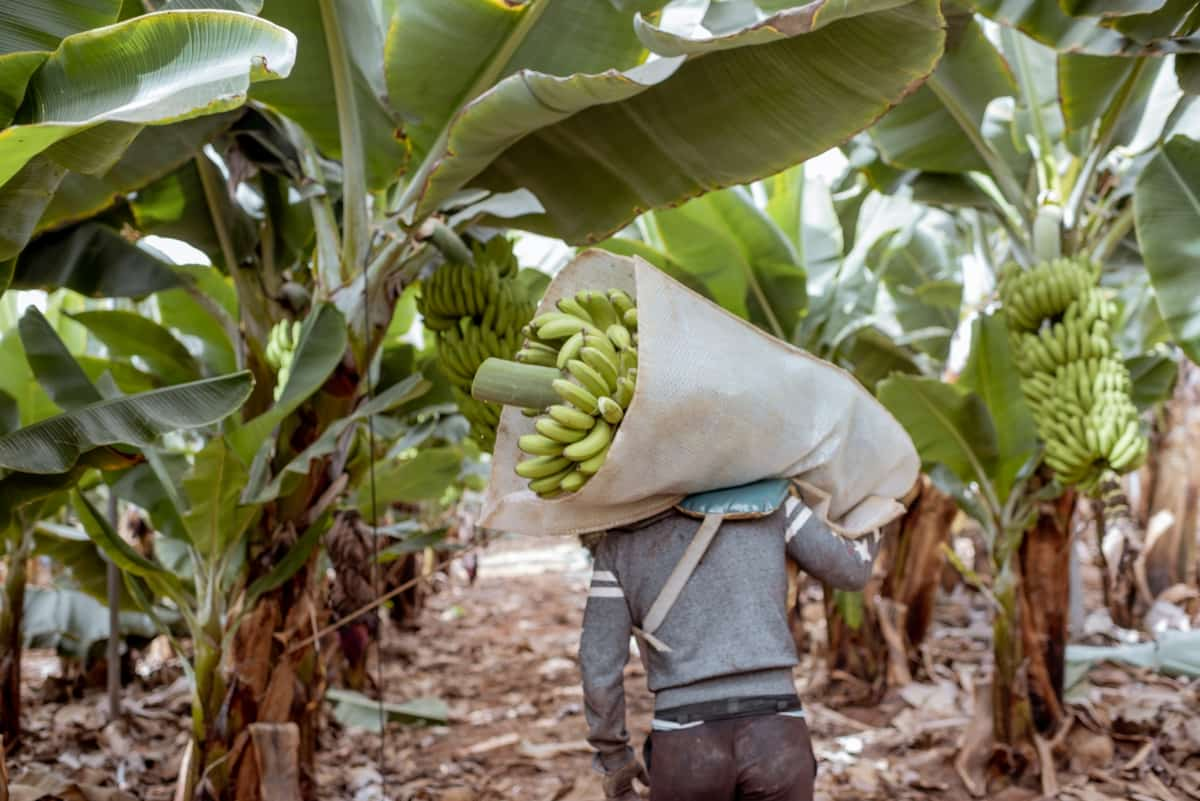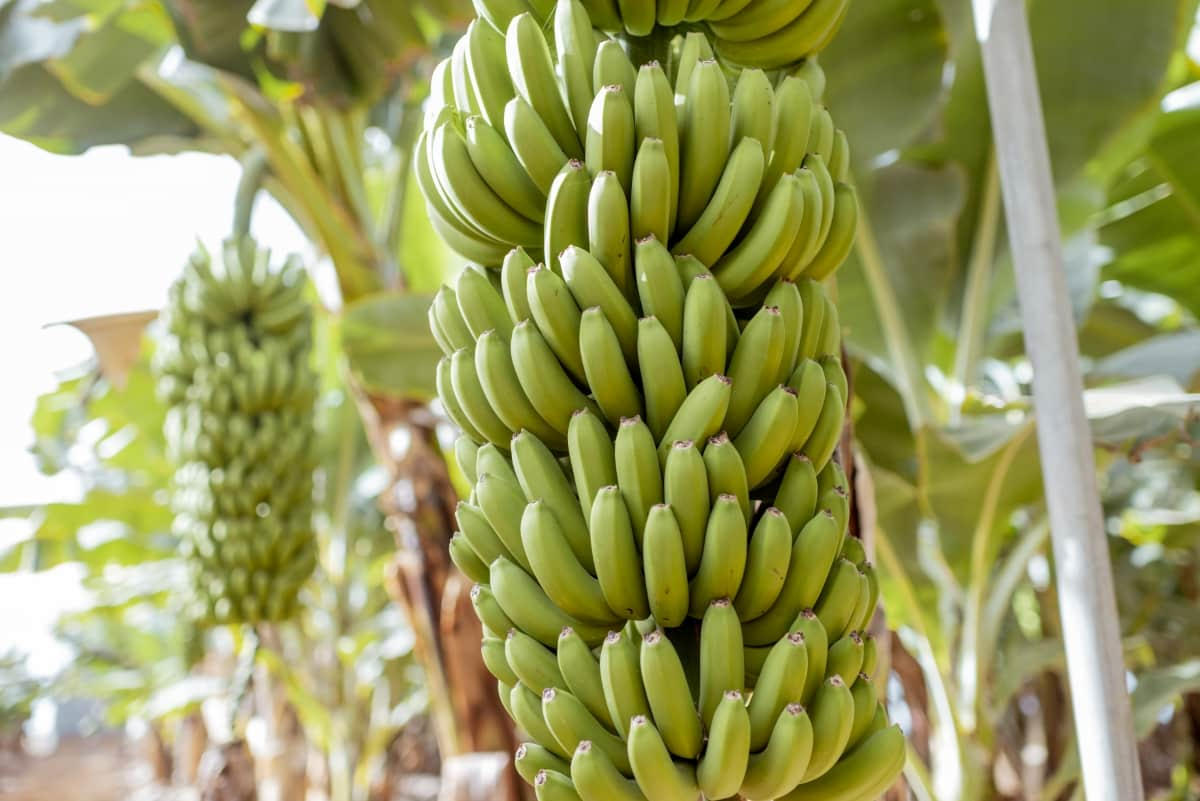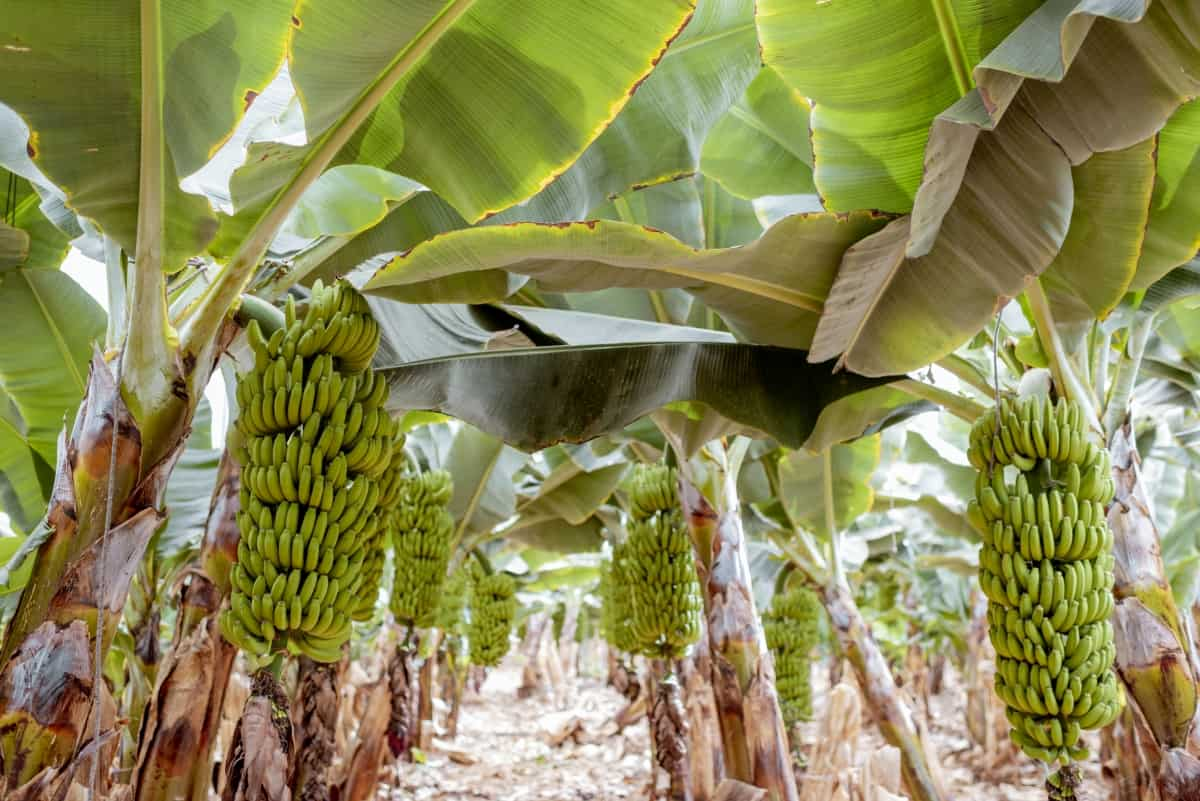The banana (Musa spp.) is a tropical fruit with a rich history dating back thousands of years, originating in Southeast Asia. Cultivated for its sweet and nutritious fruits, banana plants are grown in over 135 countries, making them a staple crop in many regions. Bananas thrive in warm, tropical climates and are valued for their high potassium content and versatility in various culinary applications. This fruit plays a crucial role in global agriculture and trade, with millions of tons produced annually, contributing to both local economies and worldwide fruit consumption.

Banana Crop Profile
Botanical Classification and Taxonomy of Bananas
Bananas fall under the genus Musa in the family Musaceae. Their botanical classification includes several species and numerous cultivars. The most common edible banana, often known as the dessert banana, is Musa acuminata, while the plantain banana used for cooking is primarily Musa × paradisiaca.
Bananas are herbaceous plants with large, paddle-shaped leaves and pseudostems. They’re monocots, characterized by their parallel-veined leaves, and classified under the order Zingiberales. The complex taxonomy of bananas comprises many subspecies, hybrids, and varieties, reflecting the diversity of this important tropical fruit, which varies in size, shape, and flavor depending on the specific cultivar.
10 Best Varieties of Bananas
- Cavendish: Widely consumed worldwide, known for its creamy texture and slightly sweet flavor.
- Gros Michel: Once the dominant banana variety until the Cavendish largely replaced it due to Panama disease.
- Sugar Banana: Small and sweet, often used in desserts and snacks.
- Red Banana: Distinctive for its reddish-purple skin and sweet, berry-like flavor.
- Plantain: Starchy and used for cooking, rather than eaten raw like dessert bananas.
- Blue Java (Ice Cream Banana): Has a creamy, ice cream-like texture and a mild vanilla taste.
- Manzano (Apple Banana): Known for its apple-like flavor and firm texture.
- Burro Banana: Squat and blocky with a tangy, lemony taste.
- Pisang Raja: A popular Indonesian banana variety with a sweet and slightly tangy flavor.
- Goldfinger: Resistant to Panama disease, it has a tangy and sweet taste with a creamy texture, similar to the Cavendish.
Climate and Environmental Requirements
Bananas thrive in tropical and subtropical climates, requiring temperatures between 25°C-30°C and a frost-free environment. They need well-distributed rainfall, ideally around 4-6 inches (10-15 cm) per month, and well-drained soil. Bananas are sensitive to strong winds, which can damage their large leaves and fruits. They also benefit from high humidity and protection from extreme heat and cold. Adequate sunlight is essential for growth.
Soil Requirements and Preparation
Bananas thrive in well-draining, fertile soils with a pH level between 5.5 and 7.0. The soil should be rich in organic matter and retain moisture while avoiding waterlogging. Before planting, the soil should be deep, well-tilled, and free from debris or weeds. Adding compost or organic matter can enhance soil fertility. Adequate spacing between banana plants should be maintained to allow air circulation and prevent disease. Proper soil preparation is crucial for optimal root development and healthy banana plant growth.
Different Propagation Methods
Banana plants can be propagated through three main methods. Suckers are small offshoots that grow at the mother plant’s base and are commonly used for propagation. Tissue culture involves growing banana plants from small tissue samples in a controlled laboratory setting, ensuring disease-free plants. While seeds can be used, they are less common for propagation due to the long time it takes to produce fruit and genetic variability. Suckers and tissue cultures are preferred for maintaining genetic consistency and quicker fruit production in commercial banana cultivation.
In case you missed it: Fertilizing Potted Banana Trees: Organic, Natural, Homemade, NPK Ratio, When and How to Apply

Planting Techniques
First, dig a hole that’s wide and deep enough for adequate room for the root ball of the banana sucker or tissue-cultured plant. Ensure the planting hole is amended with organic matter for better soil fertility. The ideal spacing between plants typically ranges from 6-10 feet (1.8 to 3 meters) in each direction, depending on the specific banana cultivar. Adequate spacing allows for air circulation, minimizes disease transmission, and ensures the efficient use of nutrients and sunlight.
Nutrient Management
They benefit from a regular supply of macronutrients such as nitrogen, phosphorus, potassium, and micronutrients like iron and magnesium. Fertilizers should be applied following soil and leaf analysis to address specific deficiencies. Organic matter, like compost or well-rotted manure, should be incorporated to enhance soil fertility and water retention.
Fertilizers should be distributed evenly around the plants’ base and applied throughout the year in split doses to ensure steady growth and fruit production. Over-fertilization must be avoided, as it can lead to environmental issues and negatively impact plant health.
Common Pests and Diseases
The most common pests include the banana weevil, nematodes, and aphids. To control them, employ regular field sanitation and resistant banana cultivars. Diseases like Panama disease and black Sigatoka are prevalent. Panama disease control involves planting resistant varieties and soil fumigation. For Sigatoka, timely fungicide applications are crucial. Banana bunchy top virus is a major concern, with no cure.
Controlling aphid vectors and removing infected plants help manage the disease. Proactive monitoring, proper sanitation, selecting disease-resistant varieties, and targeted chemical applications are essential to effective pest and disease management in banana cultivation.
Harvesting, Post-Harvest Handling, and Storage
Bananas are typically harvested when they reach maturity, indicated by full size, bright color, and slightly rounded edges. They should be carefully cut from the plant to avoid damage. Post-harvest, they must be handled gently to prevent bruising. They are often washed and treated with fungicides to extend their shelf life.
In case you missed it: Backyard Banana Tree Landscaping Ideas: Creating a Tropical Oasis

Green bananas are transported in well-ventilated crates to ripening facilities. Ethylene gas is commonly used to induce ripening. Ripe bananas should be stored at cool temperatures to slow down further ripening. Humidity levels should be monitored to prevent dehydration. Proper handling and storage practices are crucial for maintaining fruit quality and extending market availability.
Banana Yield
The duration of a banana crop from planting to harvest typically ranges from 9 to 12 months.
- Banana yield per tree can vary but often ranges from 25 to 40 kg per tree.
- Banana yield per acre is approximately 25 to 30 tons.
- Banana yield per hectare is around 60-80 tons.
- Actual yields can vary based on cultivar, climate, soil quality, and agricultural practices.
In case you missed it: Seedless Grapes Crop Profile: Cultivation Practices, Varieties, Fertilizers, and Yield

Conclusion
Successful production practices can lead to high yields and healthy banana plants. Also, staying informed about the latest developments in banana farming and adopting sustainable practices is crucial for long-term success in the industry.
- Feed Your Flock for Less: Top 10 Tips to Save on Chicken Feed
- Ultimate Guide to Ossabaw Island Hog: Breeding, Raising, Diet, and Care
- Hatching Answers: The Top 10 Reasons Your Chickens Aren’t Laying Eggs
- Eggs and Economics: Breaking Down the Cost of Raising Backyard Chickens
- Defend Your Greens: Proven Methods to Keep Iguanas Out of Your Garden
- Ultimate Guide to Cinnamon Queen Chicken: A Comprehensive Guide for Beginners
- Ultimate Guide to California Tan Chicken: Breeding, Raising, Diet, Egg-Production and Care
- Ultimate Guide to Marsh Daisy Chicken: Breeding, Raising, Diet, and Care
- 10 Types of Chicken Farming Businesses You Can Start for Profits